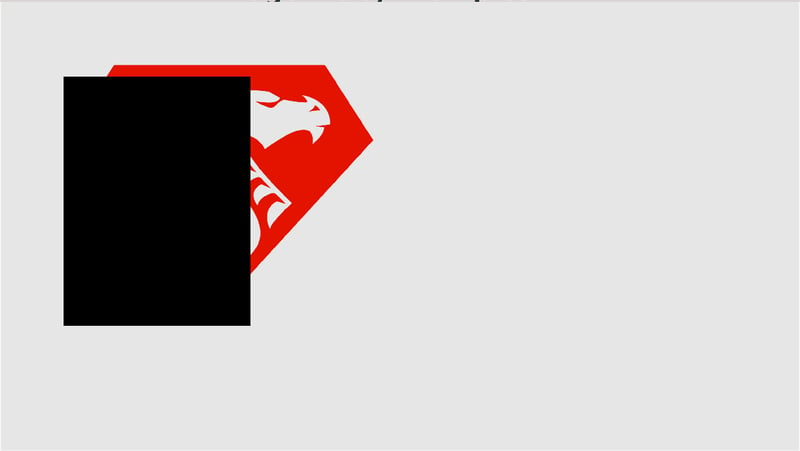Introduction to the Series
DragonRuby Game Toolkit (DRGTK) is a commercial 2D game engine built with mRuby, SDL, and LLVM. It's meant to be tiny, fast, and allow you to turn out games quickly using Ruby.
The (growing) number of posts in this series might seem intimidating - but don't let that scare you! This isn't a "follow these 20 blog posts to make your first game!" series. It's simply information I've figured out as I've needed it. There's not a lot of logical progression after the first three posts.
So please read the posts in any order you'd like and focus on making the game you want to make! Have fun!
Introduction to This Post
Unfortunately, since the documentation is focused on making games quickly, I sometimes get lost when trying to figure out how to do things that should be simple. DragonRuby seems to have borrowed Perl's "There's more than one way to do it" philosophy because for anything you want to do with the API there are several ways to do it.
The documentation and examples tend to focus on the simplest forms (which is fine) but then require digging and experimentation to figure out the rest.
To help explain/document the different API options, this post will go through different methods of rendering images (well, rectangles mostly).
API Levels
Level 0 - Getting Started
The main object one interacts with in DragonRuby is canonically called args (always accessible with $gtk.args... because there's more than one way!)
To output things, like shapes, sprites, or sounds, you can use the "shovel" operator << on args.outputs - like args.outputs.sprites or args.outputs.sounds.
For these "basic" objects, you'll need to shovel things in on every "tick" of the game engine.
This is a complete DragonRuby example to output a rectangle:
def tick args
args.outputs.solids << [100, 200, 300, 400]
end
So far, so good.
(You can assume the rest of the examples below are inside a tick method if it's not explicitly defined.)
Level 1 - Arrays
The documentation usually starts off by passing things to args.outputs as arrays - essentially positional arguments.
For example:
args.outputs.solids << [100, 200, 300, 400]
What does that do? I'm not quite sure!
Okay - it shows a black rectangle on the screen. Not that exciting, but useful enough for our examples.
The problem with using arrays though is remembering which index in the array is which attribute. On top of that, it's not even recommended to pass in arrays because they are slow (for some reason).
Level 2 - Hashes
What is better than arrays? Hashes! (Hash tables/associative arrays for anyone not familiar with Ruby.)
args.outputs.solids << {
x: 100,
y: 200,
w: 300, # width
h: 400 # height
}
Okay, that's way easier to understand!
And there are more options, too:
args.outputs.solids << {
x: 100,
y: 200,
w: 300,
h: 400,
r: 255, # red
g: 200, # green
b: 255, # blue
a: 100, # alpha
blendmode_enum: 0 # blend mode
}
Level 3 - Primitives
But there is yet another way... instead of using args.outputs.solids, args.outputs.labels, args.outputs.sprites, etc., we can output a hash to args.outputs.primitives but mark it as the right primitive "type":
args.outputs.primitives << {
x: 100,
y: 200,
w: 300,
h: 400,
r: 255, # red
g: 200, # green
b: 255, # blue
a: 100, # alpha
blendmode_enum: 0 # blend mode
}.solid!
Weird, but okay. Why might one want to do this? See the "Layers" section down below!
Level 4 - Classes
Finally, probably the most natural for a Rubyist: just use a class!
To do this, you must define all the methods expected for the type of primitive, plus define a method called primitive_marker that returns the type of primitive.
class ACoolSolid
attr_reader :x, :y, :w, :h, :r, :g, :b, :a, :blendmode_enum
def initialize x, y, w, h
@x = x
@y = y
@w = w
@h = h
end
def primitive_marker
:solid
end
end
def tick args
args.outputs.primitives << ACoolSolid.new(100, 200, 300, 400)
end
Instead of defining a bunch of methods with attr_reader, you can use attr_sprite instead which is a DragonRuby shortcut method to do the same thing.
Layers
DragonRuby renders outputs in this order (from back to front):
- Solids
- Sprites
- Primitives
- Labels
- Lines
- Borders
For each "layer" the objects are rendered in FIFO order - the first things in the queue are rendered first.
But wait... one of these things is not like the others. Doesn't primitives just hold things like solids, sprites, labels...?
Yes!
But using primitives enables better control over render order.
For example, what if we want to render a rectangle on top of a sprite? With the fixed rendering order above, it's impossible! But by using args.outputs.primitives we can do it:
def tick args
a_solid = {
x: 100,
y: 200,
w: 300,
h: 400
}.solid!
a_sprite = {
x: 100,
y: 200,
w: 500,
h: 500,
path: 'metadata/icon.png'
}.sprite!
args.outputs.primitives << a_sprite << a_solid
end
And here's the proof:
Every Tick?
args.outputs.sprites, etc. get cleared after each call to tick. So every tick we have to recreate all the objects and pass them in to args.outputs. Seems wasteful, right? Yes, it is!
It's somewhat odd that most DragonRuby examples show creating arrays or hashes for primitives each tick. It made me think somehow the rendering process was destructive - were the things added into args.outputs destroyed or modified in some way?
Turns out, no. It is fine to create e.g. a sprite representation once and render the same object each time.
Here we'll use a global for demonstration purposes:
class ACoolSolid
attr_reader :x, :y, :w, :h, :r, :g, :b, :a, :blendmode_enum
def initialize x, y, w, h
@x = x
@y = y
@w = w
@h = h
end
def primitive_marker
:solid
end
end
$a_solid = ACoolSolid.new(10, 20, 30, 40)
def tick args
args.outputs.primitives << $a_solid
end
But Wait...
We are still shoveling an object into args.outputs.primitives each time. Surely that is unnecessary?
Correct! There are static versions for each args.outputs (e.g. args.outputs.static_solids) that do not get cleared every tick.
Naturally, this is more efficient than creating objects and updating the outputs 60 times per second.
We'll explore these options in a future post, but be aware they are available!









Top comments (4)
This is great! I've been having a really good time with DragonRuby and this helps a lot, looking forward to reading the rest of the series.
Great posts! so much better than the official docs. Intriged how to got this info. Maybe you should put later all this post together in a guide/small book. Thanks for this!
Thank you for the feedback!
Most of this was determined by staring at the docs, skimming the example games, and some trial-and-error.
These are great write ups :-)
DragonRuby’s philosophy of “Continuity of Design” is why these levels exist (each approach is on a spectrum that spans quick to get going vs long term sustainability).